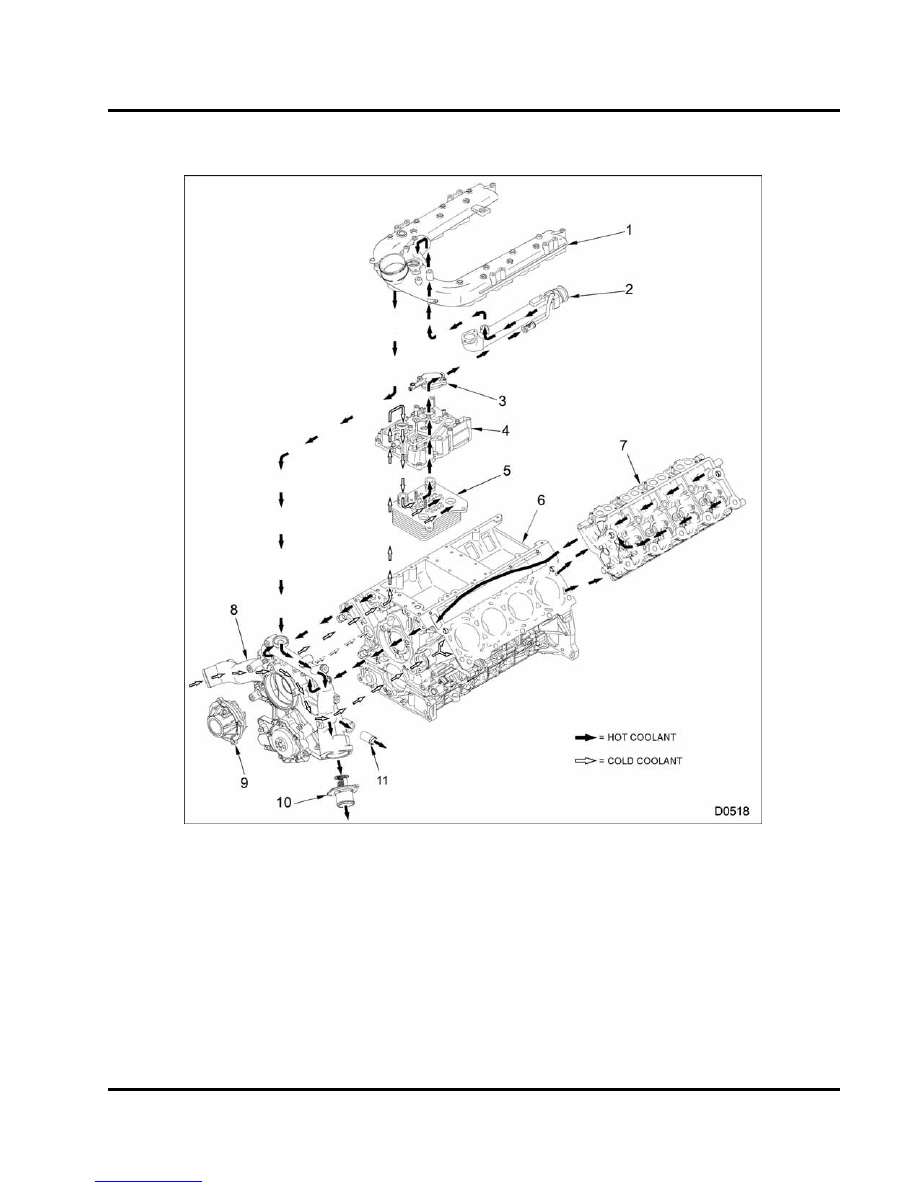Engine International VT365. Manual - part 10

ENGINE SYSTEMS
37
Cooling System
Figure 31 Engine cooling system components
1.
Intake manifold
2.
EGR cooler
3.
Coolant outlet cap
4.
Oil cooler cover
5.
Oil cooler (not serviced
separately)
6.
Crankcase
7.
Cylinder head
8.
Front cover housing
9.
Water pump
10. Thermostat assembly
11. Coolant deaeration fitting (to
deaeration tank)